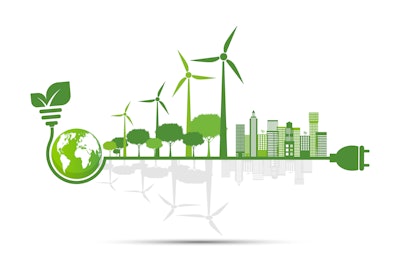
Supplyframe announces Electronics Product Carbon Footprint (PCF), a new source for sustainability intelligence that provides global manufacturers instant access to product carbon footprint for more than 300 million electronic parts. This industry-first offering addresses compliance reporting and puts companies on a path to measure and report the sustainability of their new product design and sourcing decisions.
The new capability is being introduced as new European Union regulations and evolving U.S. rules are forcing manufacturers to identify how to quantify and report their supply chain emissions. To date, electronics manufacturers have focused on reducing Scope 1 and 2 emissions to comply with such regulations and their corporate sustainability goals. However, an estimated 40% of the CO2 emissions associated with electronics products are Scope 3 emissions, which are related to supplier manufacturing process, material consumption, and transportation modes. Until today, companies had little to no information about CO2 emissions associated with the electronics components they buy. This has created a troublesome blind spot for global manufacturers seeking to measure product carbon footprint for electronics content embedded in their innovation portfolios.
“Until now, engineers designing new products and procurement teams tasked with obtaining components for those products have had no way to evaluate the CO2 emissions of a new design or purchasing decision,” says Supplyframe CEO and founder Steve Flagg. “This capability gives them specific product carbon footprint details to meet regulatory reporting requirements and, ultimately, identify better alternatives that balance corporate goals of efficiency, cost optimization, and sustainability.”
Key Takeaways:
- Supplyframe’s new capability provides instant access to emissions data for millions of parts, putting needed information at users’ fingertips. Previously, companies trying to calculate a roll-up value would have had to dedicate weeks or months to get this data at the part or component level of a complex bill of material (BOM).
- From material selection to end-of-life, this new capability measures the total carbon impact, expressed in kilograms of CO2 equivalent, and is integrated into the same DSI Platform that already delivers industry-leading part intelligence and supply market insights. This foundational new offering also leverages the sustainability partner ecosystem of Siemens, Supplyframe’s parent company, and will expand to be part of a broader set of metrics and analytics capabilities. The new CO2e capability is available via an add-on subscription to Supplyframe’s DSI platform.



















